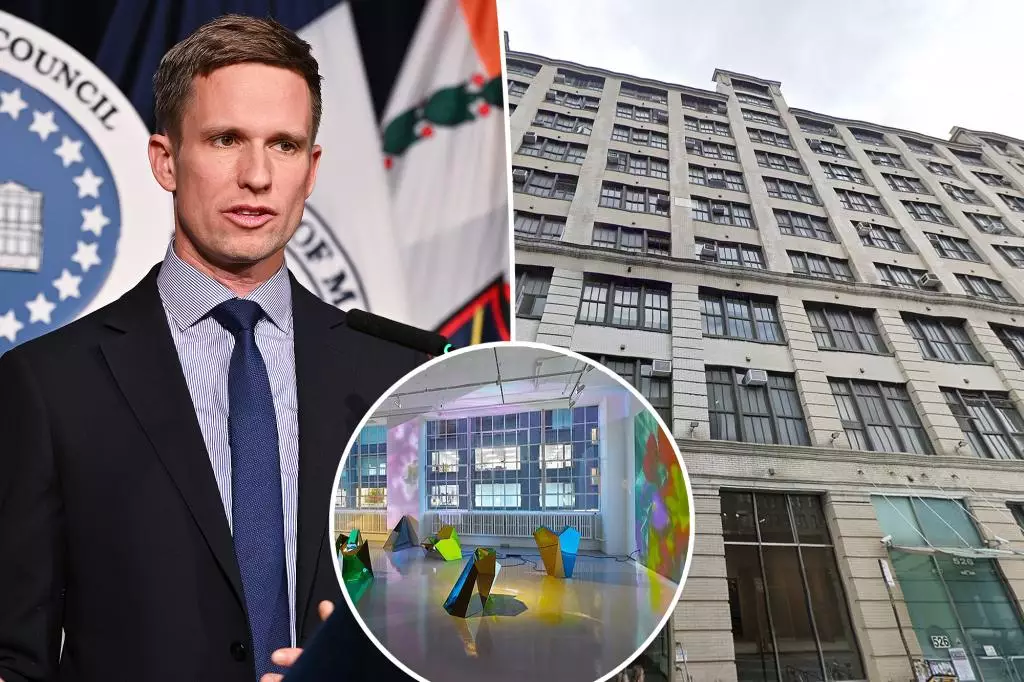In the ever-evolving landscape of New York City, the West Chelsea Arts Building has stood as a beacon of creativity and artistic expression since its establishment in 1993. Founded by philanthropist Gloria Naftali and her late husband Raymond, this 400,000-square-foot space at 508-534 West 26th Street has been instrumental in providing affordable studio space to artists and galleries. Renowned figures in the art community, including Ross Bleckner, Louise Fishman, and Hiroshi Sugimoto, have called this establishment home. The recent demise of Gloria Naftali in September 2022 has intensified concerns regarding the future of this beloved arts hub, now up for sale for $170 million by her estate.
As news of the sale spreads, local residents and community leaders express their trepidation about the potential consequences. The prospect of gentrification looms large, as many fear that the sale could lead to skyrocketing rents and the displacement of approximately 200 artists who have cultivated their livelihoods within these walls. The ongoing affordability crisis in New York City adds a layer of urgency to these fears, highlighting an ongoing struggle to maintain the city’s reputation as an artist’s haven. City Council member Erik Bottcher, along with other prominent political figures such as US Representative Jerry Nadler and Manhattan Borough President Mark Levine, has rallied to preserve the building’s mission, voicing their concerns in a letter addressed to the Raymond and Gloria Naftali Foundation. They stress the significant role that this establishment plays in the cultural fabric of New York City.
The letter implores the Naftali Foundation to rethink the sale, invoking Gloria Naftali’s wishes that the building maintain its character as an artist-centric space. According to her will, she expressed a desire, albeit without a legal obligation, for the foundation to prioritize the building’s use for artist studios and galleries. This poignant request underscores the importance of the arts community within Chelsea and reflects a broader sentiment regarding the preservation of cultural spaces.
Meanwhile, council member Bottcher reveals that he first learned about potential evictions from anxious tenants, emphasizing their fears regarding an impending sale that might prioritize profit over people. He warns of a scenario where the Naftali Foundation could sell to the highest bidder, disregarding the consequences for the artists entrenched in the community. The combination of rising rents and dislocation from established studios could erode the very essence that makes New York City an artistic mecca.
The potential sale of this historic arts building could have far-reaching consequences beyond the immediate loss of studios. It poses a risk of dismantling the collective identity of the neighborhood, altering its character and diminishing its appeal as a nurturing ground for creativity. Established galleries, such as Green Naftali Gallery and Berry Campbell, contribute to the building’s vibrant ecosystem, fostering collaborations and serving as cultural touchpoints for the community. The loss of their presence could diminish the landscape of contemporary art in New York City, leading to a homogenization of the city’s creative space and undermining its storied legacy.
As stakeholders prepare for discussions with the Naftali Foundation, the urgency to advocate for the arts in New York City is palpable. The ongoing dialogue surrounding the West Chelsea Arts Building encapsulates a broader struggle between maintaining affordable artistic spaces and the relentless tide of commercialization that threatens to engulf them. Civic leaders maintain that the voices of the tenants must be heard, and collaborative efforts to protect this vital resource for the community must continue.
In light of these challenges, it is clear that preserving the West Chelsea Arts Building is not solely about retaining studio space; it is about safeguarding the soul of a community that has thrived on creativity and collaboration for decades. As the situation unfolds, the hope remains that local leaders can strike an equitable balance between financial responsibilities and the unwavering commitment to the arts that define New York City’s cultural identity.

